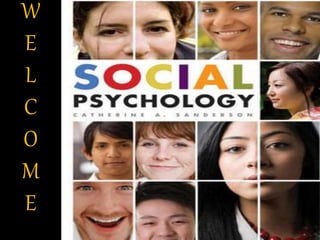
prosocial behaviour
- 3. Topics Under Discussion • Pro-social Behavior • Empathy-Altruism • Negative State Relief • Empathetic Joy • Genetic Determinism
- 4. Prosocial Behavior • Prosocial Behavior—helpful action that benefits other people without necessarily providing any direct benefits to the person performing the act, and may even involve a risk for the person who helps
- 5. Type of Behavior Defining Prosocial Behavior Prosocial Behavior Benevolence Pure Altruism Definition Example Any action intended to benefit another (regardless of motive) Giving a large tip to a waiter to impress your boss with your generosity
- 6. Type of Behavior Prosocial Behavior Benevolence Pure Altruism Definition Example Benefits another intentionally for no external reward Sending $20 to a charity to make yourself feel good inside
- 7. Type of Behavior Defining Prosocial Behavior Prosocial Behavior Benevolence Pure Altruism Definition Example Benefits another intentionally for no external or internal reward Jumping on a railroad track to help a stranger who has fallen
- 8. Empathy-Altruism –Empathy-Altruism: It feels good to help others • Empathy-Altruism Hypothesis (Batson et al., 1981)—prosocial behavior is motivated solely by the desire to help someone in need –People are more likely to help others for whom they feel much empathy.
- 9. A2 PSYCHOLOGY LANA CROSBIE 9 The Empathy –Altruism Hypothesis. • There are two main emotional reactions that occur when we observe someone in distress • Empathetic Concern- focus upon the other persons needs and motivated to reduce it. • Personal Distress- Concern with ones own discomfort added with the motivation to reduce it.
- 10. She might still be alive today…
- 11. Negative-State Relief –Negative-State Relief: Helping makes one feel better •Negative-State Relief Model (Cialdini et al., 1981)—prosocial behavior is motivated by the bystander’s desire to reduce his or her own uncomfortable negative emotions
- 12. Empathic Joy –Empathic Joy: Helping as an accomplishment • Empathic Joy Hypothesis (Smith et al., 1989)—prosocial behavior is motivated by the positive emotion a helper anticipates experiencing as the result of having a beneficial impact on the life of someone in need –Feedback about the impact of the act needs to be given.
- 13. Genetic Determinism –Genetic Determinism: Helping as an Adaptive Response •Genetic Determinism Model (Pinker, 1998)—behavior is driven by genetic attributes that evolved because they enhanced the probability of transmitting one’s genes to future generations
- 14. –Reciprocal Altruism—cooperative behavior among unrelated individuals that benefits both individuals because when A helps B, B is motivated to reciprocate at some point by helping A, which also benefits the larger group to which both A and B belong
- 15. Evolutionary Factors in Helping: The “Selfish Gene” • What is important is survival of the individual’s genes, not survival of the fittest individual • Kinship selection is the tendency to help genetic relatives –Strongest when biological stakes are particularly high
- 16. 80 60 2 0 0 High (parents , siblings, children ) Cunningham et al. (1995) Percentage Volunteering to Help 40 Degree of Relatedness Mod. (grand- parents ) Low (first cousins ) None (attracti ve stranger s)
- 18. CONCLUSION • People engage in many prosocial behavior and this behavior is based , in part of selfish and in part on unselfish motives. There are many hypothesis which tries to explain such behavior like Empathy- Altruism,Negative State Relief Empathetic Joy and Genetic Determinism
- 19. Keywords • Pro-social Behavior • Empathy-Altruism • Negative State Relief • Empathetic Joy • Genetic Determinism • Inclusive Fitness • Selfish Gene • Benevolance
- 20. Reference • Baron R. A, Byrans Combe N.R. (2009). Social Psychoogy 11th Edison, New Delhi, Prentice Hall. • Elliot Aronson, Timothy D. Wilson, and Robin M Akert, (2010). Social Psychology, 7th edison, Pearson Publishing. • Myers D.G (2006). Social Psychology. New Dehi. Tata McGraw Hill Publishing.
- 21. ANK U
